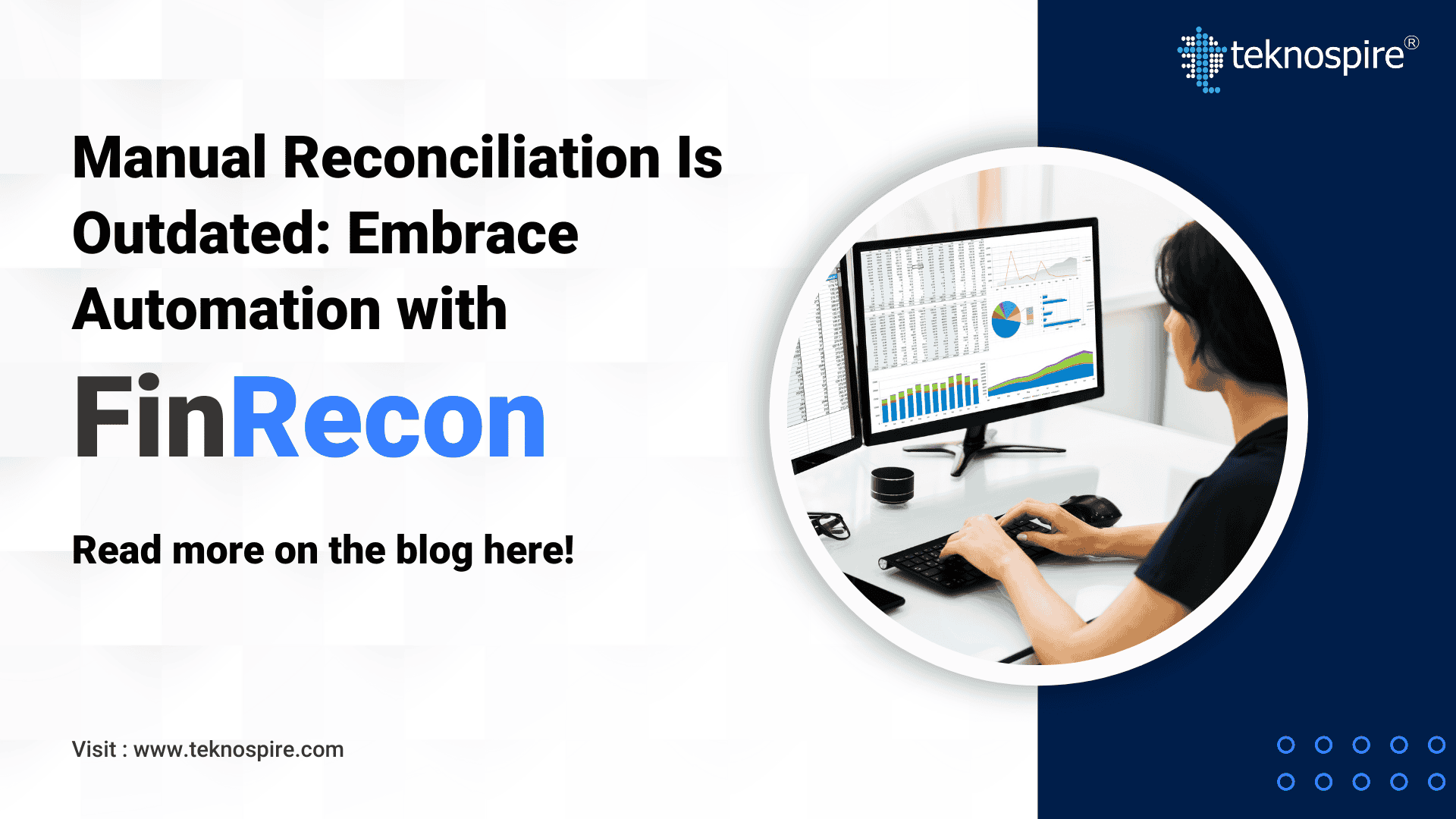Manual reconciliation involves comparing and verifying transactions or relevant financial data, such as account balances manually without any intervention of automation or technology. This process requires additional time, cost and labour and is prone to error and other discrepancies.
Moreover, several business departments like collections and procurement teams find it cumbersome to reconcile stocks against purchase orders/delivery challans or huge stacks of data manually.
All of these strongly demand the profound applications of automated reconciliation solutions built-in with AI-driven intelligence and smart algorithms to standardize, automate and ease reconciliation processes. FinRecon simplifies and eases the reconciliation process to serve businesses with certain needs and allows full control over the workflow.
The Challenges of Manual Reconciliation
The hurdles that any business comes across while carrying out manual reconciliation are endless. Let’s highlight a few of them:
- Missing transactions, unwanted errors, timing differences.
- Uncontrolled changes and inconsistent reconciliation templates.
- Lack of real-time status updates and never-ending repetitive tasks.
- Unidentified discrepancies, reporting challenges and audit complications.
Why is Manual Reconciliation Inefficient for Businesses?
Manual reconciliation involves additional resources, time, high costs and human errors. It slows down financial processes and hinders decision-making. In this technological era, it has taken a backseat since there are huge datasets to import and streamline processes.
The Need For Automation
As mentioned earlier, reconciliation challenges can be overcome with automated tools that not only digitize and automate the process but also improve efficiency and accuracy. There is a high need for automation to address these sufferings and make things seamless and convenient throughout. With cutting-edge technology, data entry, structuring, and extraction are now hassle-free.
In a similar context, FinRecon, a revolutionary automated reconciliation platform, eases reconciliation for financial and accounts departments, banking systems, inventory and stock management departments.
What Is The Difference Between Manual Reconciliation and Automated Reconciliation?
Manual reconciliation is a traditional method of comparing and matching financial records, inventory, etc from different sources. Automated reconciliation, on the other hand, utilizes software and technology to streamline the process.
Critical Role of AI and ML
This era demands more utilisation of Artificial Intelligence (AI) and Machine Learning (ML) to make lives easier. In every growing sector from IT, manufacturing, education, finance, banking, science, etc. to our everyday lives, AI and ML play a critical role in bringing in opportunities for growth and development leading to spectacular change.
Similarly, the world of finance and technology combined has committed to making manual tasks faster and easier. Here, FinRecon is developed with advanced technology and intelligence that enable automation which –
- Identifies anomalies in financial data to help in tracking potential errors or inconsistencies
- Allows accurate comparison and matching of transactions across all sources
- Helps create reconciliation rules, and tolerance levels for better flexibility and customisation
- Improves accuracy over time, improving effectiveness in identifying and resolving errors using the case management feature.
How Is FinRecon A Market Fit To Solve The Challenges?
FinRecon offers a comprehensive suite of features designed to overcome the limitations of manual reconciliation:
- Customized and Controlled Workflows: Businesses can automate and tailor reconciliation workflows for their needs. Automated workflows reduce manual steps and errors and ensure proper oversight and accountability.
- Flexible Data Importation: Accommodates various data sources, including databases, APIs, and common file formats.
- ML-based OCR models: FinRecon can handle a variety of document formats to improve data extraction accuracy from unstructured documents.
- Document Management: The platform maintains a centralized repository for reconciliation documents with easy access to source and destination documents for auditing and reference and ensures compliance.
- Real-time Visibility Dashboards: To provide real-time insights into reconciliation status and performance and support data-driven decision-making.
- Complete Audit Trail: Keeps a clear record of reconciliation activities for auditing and compliance purposes and helps businesses meet regulatory requirements.
The Future of Reconciliation
Automation is the future and we are continuously heading towards that step-by-step. With technical advancements skyrocketing in every industry, businesses will deal more aggressively with sophisticated solutions that streamline and improve this critical business process.
- Advanced algorithms will enable even more accurate and efficient matching of transactions.
- Improved technology shall allow for enhanced data extraction from unstructured documents.
- Global accessibility for reconciliation tools from anywhere in the world for all businesses.
- AI-powered predictive analytics will easily identify potential business risks and opportunities ahead.
- Automation will not only ensure compliance with various regulations and standards but also secure sensitive data.
Experience the FinRecon Difference
To conclude, we must add that it’s time for businesses to bid goodbye to the inefficiencies, errors, and frustrations associated with manual reconciliation processes. As automation continues to evolve, reconciliation can be expected to become even more efficient, accurate, and valuable for businesses of all sizes. By embracing these technological advancements, businesses can gain a competitive edge and drive their financial success.
It’s time for a change…
Don’t wait. Automate reconciliation now.
Frequently Asked Questions
1. What do you mean by manual reconciliation?
Manual reconciliation is a method of comparing and matching financial records from different sources by hand.
2. Mention the benefits of AI-powered reconciliation platforms for businesses.
Businesses draw benefits from AI-powered reconciliation platforms:
1. Optimized Capacity.
2. Enhanced Visibility.
3. Reduced Risk.
3. How does automated reconciliation improve financial processes?
Automated reconciliation improves financial processes for businesses by –
1. Accurate transaction matching.
2. Data extraction from unstructured documents.
3. Data extraction from unstructured documents.
4. AI-powered predictive analytics.
5. Identification of potential business risks and opportunities.
6. Ensuring compliance with various regulations.
